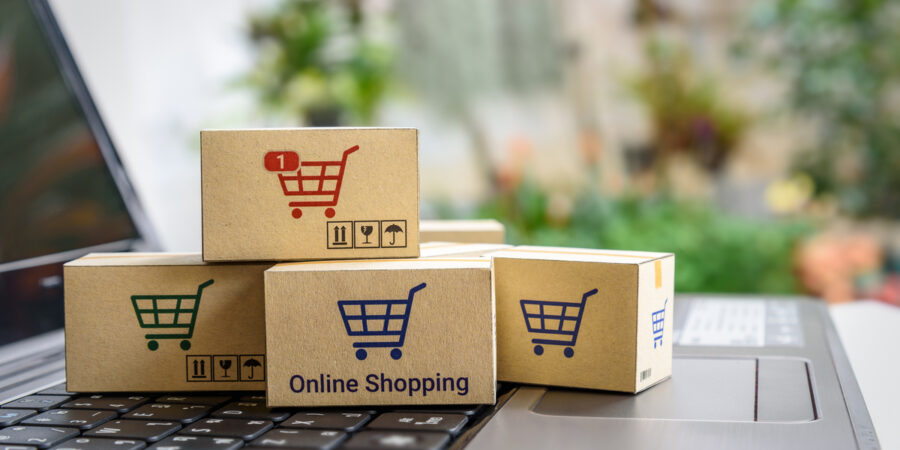How to Sell MORE Products Online
How to implement an eCommerce store on your business website and sell products online
Why did so many retail stores successfully trade through the Coronavirus shutdown?
Well, it’s because many of these companies knew that they had to adapt to the COVID-19 situation and move their business online (Omnichannel).
For many of these small companies, they had a working website that could easily be enabled for a functional eCommerce store.
Others, who perhaps couldn’t easily modify their website, chose to take advantage of the many global eCommerce Marketplaces like eBay, Amazon, and Catch of the Day who literally have thousands of shoppers already looking into their virtual shop windows.
The future of eCommerce is EXTREMELY positive.
But, starting an eCommerce business is hard work, and it demands many steps and decisions that need to come together at the right time.
If you currently have a traditional brick-and-mortar style business and have made the decision to move some or all of it online, then this article provides you with the steps on how to create a successful online business.
How to Build a Successful Online Business
40% of worldwide Internet users have bought products/goods online from an eCommerce store!
The internet and the advancement of Smartphones have enabled more and more people to shop online. Consumers have exchanged store visits for the convenience and digital experience of online shopping.
This is WHY it’s absolutely critical for businesses to adopt an Omnichannel Sales and Marketing Strategy!
10 Essential Steps to Building an eCommerce Store
The number of consumers browsing and buying from eCommerce stores is expected to hit 270 million. (Mainly been driven by the use of smartphones)
If you want to have a SUCCESSFUL online business, here are 10 ESSENTIAL steps to building an eCommerce store and selling online.
1. Plan what you want to be selling online?
Is it a product or a service you’re offering, remembering that the way you deliver and support each of these will be different? Think about your offers and loss-leaders that will generate traffic to your store e.g. offering free downloads or a free trial
2. Plan out your images and supporting content.
Think about each of your online listings and what content you will need to create for each. Remember that the more information that you can provide, the more chance you have of someone purchasing it. Ensure you create quality content for your website and social media.
3. Choose an eCommerce platform for your website.
If you have an existing website and what to add an eCommerce store, firstly you need to determine what type of website you have e.g. WordPress or Drupal or perhaps one of the free sites like Wix or Square (free sites limit your options). Most of the main website platforms have simple plug-in modules that make the task less complicated. Research tools such as Shopify, WooCommerce or BigCommerce.
4. Update your website.
You will need to think about how to optimise your website to create a logical digital customer experience and journey. Without this, the higher the chance of shoppers becoming lost or confused and clicking through to other websites. Take some time to think about the flow through your website from the home page to products pages and ultimately the shopping cart.
5. Plan for the support and resources you may need.
It’s a given that you will need help with this project. Think about the level of support you might need to implement your eCommerce Platform, update your website, create images & content, plus how to optimise the site with SEO and Digital Marketing. Can you handle the technical pieces yourself or do you need to factor in a support or consulting package to help you?
6. Plan out your distribution and delivery process.
Partnering with companies like Australia Post can solve many of distribution challenges. Understand WHERE your customers are and the types of delivery services needed for YOUR type of products
7. Design your customer support program.
Create a responsive customer support process with online help resources and attentive contact centres. Make sure you have a clear online policy to support returns and exchanges.
8. Optimise your product pages.
Well-designed product pages sell the value of your products, so it’s important to make them detailed and compelling. Ensure that each page has quality content and images, detailed descriptions PLUS make sure that the page and site is optimised for SEO (search engine optimisation) and digital marketing.
9. Design your shopping cart upsells.
Most eCommerce platforms have the ability to link related products and offer an up-sell e.g. “add on this product for half price”. Try to maximise your shopping cart potential.
TIP: Consider adding a customer loyalty program offer at the checkout e.g. rewards cards, points, store credits.
10. Design your post-purchase customer marketing program.
Use an email marketing program like MailChimp that integrate with your eCommerce platform to automate the communications and marketing of post-purchase sales offers. Design emails that promote new products and offers, plus up and cross-selling opportunities.
Marketing your NEW Online Store
Once you’ve done all the hard work to create an eCommerce store for your business, don’t forget to tell people about it?
Work with a brand marketing agency to implement a marketing campaign focused on promoting your new online store and your products and service offers.
Promote your Website Store. Just because you have a store button or a shopping cart logo on your website, doesn’t mean that people know to use it. Place a banner on your home page or a news/blog article promoting the eCommerce store.
Email your customers. Use your email marketing system to send out an eCommerce store launch campaign to your database e.g. customers, prospects, partners, sales leads etc.
Promote instore. For shoppers visiting your store, perhaps place some signage on your store windows to advise shoppers that you now offer an online shopping option.
Promote on social media. Post some news stories on your social media accounts that provide the link to your new online store. Create a Digital Marketing Campaign
Create entries on Facebook and Google Shop. Digital platforms such as Facebook and Google Shop allow you to create product listings that can hyperlink back to your own website shopping store.
Think about selling on eCommerce marketplaces. Consider expanding your customer reach by selling your products on eCommerce Marketplaces. These platforms might charge you a fee, BUT they already have thousands of shoppers searching their platform who would have never found your website.
Supporting Links and Articles
How to sell using eCommerce Marketplaces
20-Ways to Increase Online Sales
How to Develop and Market your Website
How to Market your Business using Digital
Building a Digital Customer Experience & Journey
How to sell your products on Amazon
Need some eCommerce Help?
We recommend that you also engage an agency like rev Branding who specialise in helping people to grow their business online. We can help you with;
• Getting your brand identity and message right
• Developing and marketing your website
• Implementing your eCommerce platform
• Creating your online digital experience and journey
• Content creation to ensure your product listings are compliant
• Social Media and Digital Marketing
• Product launch campaigns.
Visit our eCommerce Marketing Dashboard
To understand more about how we help companies market their business using digital, please contact us on +61 3 9863 7444 or [email protected].


